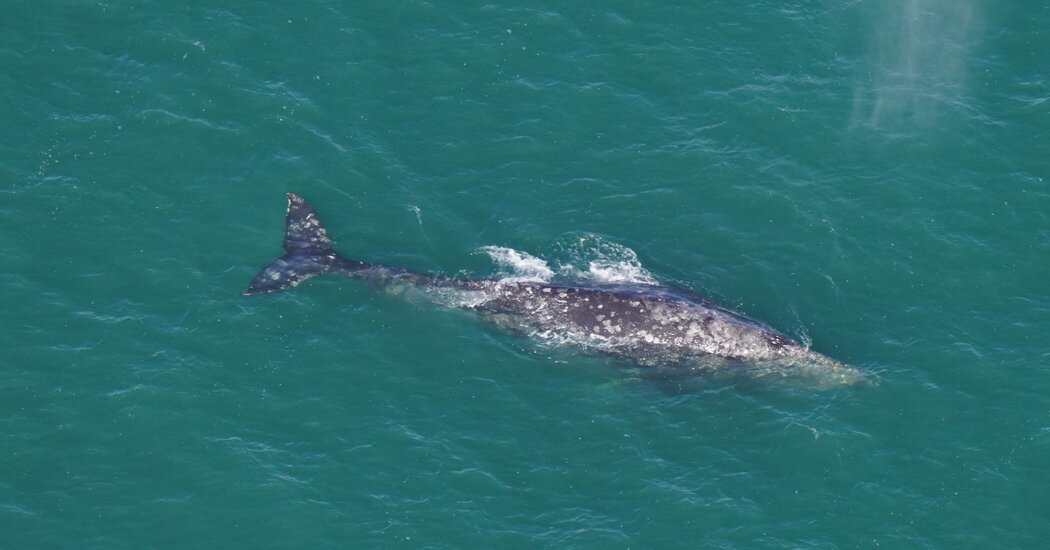Gray whales are regularly found in the North Pacific, but sightings in the Atlantic, from which they had vanished by the 18th century, are extremely rare.
Researchers with the New England Aquarium were conducting a regular survey of the waters south of Martha’s Vineyard and Nantucket in Massachusetts last week when something caught their eye.
What they spotted, a whale without a dorsal fin, led the researchers to think that it might be a North Atlantic right whale, a critically endangered species that the aquarium has been closely monitoring. But the whale’s skin was blotchy, and if it were a right whale, something would have been wrong.
“I kind of had a weird feeling about it,” Orla O’Brien, an associate research scientist, said in an interview. “Something didn’t seem right.”
So when the whale resurfaced and Ms. O’Brien and her observation partner, Kate Laemmle, a research technician, were able to see its distinctly shaped head and mottled gray and white skin, they could not believe their eyes: Could it be a gray whale? In the Atlantic Ocean?
“It was really hard to mentally understand it,” Ms. O’Brien said.
But a gray whale it was, a sighting the aquarium described in a statement on Tuesday as “an incredibly rare event.”
Gray whales are regularly found in the North Pacific, but sightings in the Atlantic, from which the whales had vanished by the 18th century, are extremely rare. Experts say that it is not clear why they had disappeared, but that whaling may have been a factor.
